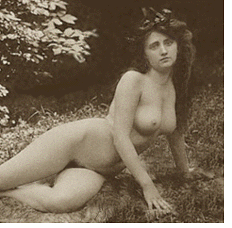...Best of Sicily
presents... Best of Sicily Magazine. ... Dedicated to Sicilian art, culture, history, people, places and all things Sicilian. |
by Vincenzo Salerno | ||
Magazine Best of Sicily Arts & Culture Fashion Food & Wine History & Culture About Us Travel Faqs Contact Map of Sicily |
Lady Chatterley's Lover is the erotic love story of Constance Chatterley, aristocratic wife of a wheelchair-bound husband, who has an affair with a gamekeeper of their country estate. Tame by today's standards, the book was unorthodox in 1928. D.H. Lawrence wrote most of it while in Italy. The novel was not without precedent in erotic literature; Fanny Hill had appeared in 1749. Lady Chatterley, of course, was far more explicit than previous romantic novels of this kind. But Lady Chatterley was slightly political, too, and this offended (or perhaps frightened) many conservatives. British and American women had just won the right to vote; the spirit of liberation was in the air. Moreover, Lady Chatterley's husband was confined to a wheelchair as a result of wounds suffered in the First World War, making the novel's subtle pacifism almost as scandalous as its sexual theme. Its author's outspoken opposition to the Great War was well known, his support of women's rights equally so. In the eyes of some people, D.H. Lawrence was a dangerous man whose ideas could alter the very fabric of society. But unlike his idealistic comtemporary, H.G. Wells (who advocated "free love"), Lawrence was considered an outsider. David Herbert Lawrence was born in 1885 at Eastwood, Nottinghamshire,
the son of a coal miner and a retired teacher. He won a scholarship to University
College, Nottingham, and then found work as a teacher. His first novel,
The White Peacock, was published in 1911, followed in the next year
by The Trespasser. Then Sons and Lovers was published in 1913.
Lawrence eloped with Frieda Weekley (née von Richthofen, cousin of the famous German flying ace), wife of one of his professors, and ended up with her in Italy in 1919. He continued to write, finding his way to Sicily and publishing Women in Love, The Rainbow It is little known that the character Constance Chatterley is based on an Englishwoman living at Taormina during Lawrence's stay there. Like Cefalù, scenic Taormina was a refuge for many English; it is the only Sicilian city except Palermo to have an Anglican church and parish. Unlike the English at Palermo, Naples or even Florence, those at Taormina were often adventurers seeking a place where they could live uninhibited, undisturbed by local authorities who could not understand them (in any sense). Holiday travel and vacations as these exist today were virtually unknown then --except among the privileged few. In such an environment, in an Italy marked by widespread Catholic conservatism and embryonic Fascism, the real life (unmarried) model for Lady Chatterley took up with a Sicilian farmer. Their nude frolic through an olive grove in the pouring Summer rain was one of many experiences that inspired Lawrence. Certain other aspects of the protagonist's personality were likewise based on those of the eccentric lady --anonymous but immortalized. A timeless story, perhaps, whose seeming offense to modesty has been eclipsed by the evolving ideas of more recent times. About the Author: Palermo native Vincenzo Salerno has written biographies of several famous Sicilians, including Frederick II and Giuseppe di Lampedusa. | |
Top of Page |
 Completed in 1928, and first published in Florence (to avoid censorship), what was then considered the most erotic novel ever published in English was inspired by the experiences of an Englishwoman in Taormina, an eastern Sicilian resort town which boasted an emigre population of sophisticated
and eccentric Brits. As recently as 1959, puritanical Americans, in the
guise of the U.S. Postal Service, attempted to ban Lady Chatterley's Lover from the mails, following similar action taken in Japan several years earlier. (The book is still
banned in China, where it is a black market item.) The first film version, released about the same time, provoked similar censorship in the United States and around the world. Even in 1960, few countries seemed ready for the idea of a sexually liberated woman.
Completed in 1928, and first published in Florence (to avoid censorship), what was then considered the most erotic novel ever published in English was inspired by the experiences of an Englishwoman in Taormina, an eastern Sicilian resort town which boasted an emigre population of sophisticated
and eccentric Brits. As recently as 1959, puritanical Americans, in the
guise of the U.S. Postal Service, attempted to ban Lady Chatterley's Lover from the mails, following similar action taken in Japan several years earlier. (The book is still
banned in China, where it is a black market item.) The first film version, released about the same time, provoked similar censorship in the United States and around the world. Even in 1960, few countries seemed ready for the idea of a sexually liberated woman. and other novels. The coupled continued to travel, to South America and elsewhere. Only thirty years after its publication did Lady Chatterley's Lover appear uncensored in the United Kingdom. Lawrence died at Vence, near Nice, in 1930.
and other novels. The coupled continued to travel, to South America and elsewhere. Only thirty years after its publication did Lady Chatterley's Lover appear uncensored in the United Kingdom. Lawrence died at Vence, near Nice, in 1930.